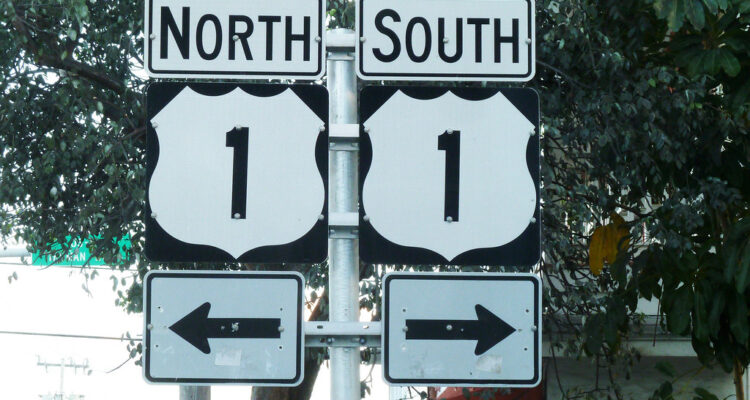U.S. Route 1, often simply called US1, stands as one of the most historically significant highways in the United States. Established in 1926 as part of the original U.S. Highway System, this iconic road stretches over 2,300 miles, running from the Canadian border at Fort Kent, Maine, all the way south to Key West, Florida.
Long before cars and asphalt, the path that would become US1 followed trails forged by Native Americans and early colonists. In fact, portions of the highway trace back to the 1600s, when the King’s Highway was commissioned to connect Boston and Charleston. By the 18th and 19th centuries, this corridor evolved into a major postal route—most notably the Boston Post Road—and became essential for trade, communication, and travel along the East Coast.
With the rise of the automobile in the early 20th century, these regional roads were incorporated into a longer network known as the Atlantic Highway. Then, in 1926, US1 was officially designated as part of the newly formed U.S. Numbered Highway System. At the time, it was the backbone of the East Coast, a direct north-south route that connected nearly every major city from New England to South Florida.
Over time, the highway became a vital part of American life and culture, threading its way through cities like Boston, New York, Philadelphia, Washington, D.C., Richmond, Charleston, Savannah, Jacksonville, Miami, and finally, Key West. Although the development of the Interstate Highway System in the 1950s—particularly Interstate 95—redirected much of the long-distance traffic, US1 remained indispensable. It continued to serve as a local and regional artery, weaving through downtowns, neighborhoods, and business districts that the newer highways bypassed.
Nowhere is US1 more iconic than in Florida. From Jacksonville to Key West, the road hugs the Atlantic Coast and often serves as the Main Street of coastal communities. Perhaps its most famous stretch is the Overseas Highway, the southernmost portion that connects the Florida Keys. This segment, built atop the remnants of Henry Flagler’s visionary Overseas Railroad, offers one of the most scenic drives in America, where the highway seems to float between islands and sky.
US1 is more than just pavement and paint—it’s a cultural thread that binds the East Coast. Along its path, travelers encounter historic landmarks, military sites, civil rights battlegrounds, and the evolving story of American cities and towns. The highway has also found its way into literature, music, and film, often symbolizing freedom, movement, and the enduring allure of the open road.
Today, U.S. Route 1 continues to play a vital role in the lives of the communities it touches. Though it may no longer be the fastest way to get from Maine to Florida, it remains one of the most meaningful—a living, breathing reminder of how America grew, moved, and found its way forward.

